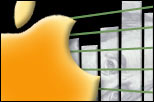Apple drop in NAND demand signals market fall


Flash memory growth will be a shadow of what was originally predicted according to new figures.

According to iSuppli, instead of global growth of NAND flash revenue hitting 27 percent year-on-year in 2008 as first thought, the increase will only achieve single digits.
"Unless the economy recovers vigorously later this year, last year's DRAM market disaster could be repeated in NAND this year," Nam Hyung Kim, director and chief analyst of memory for iSuppli, said in a statement.
In what it sees as a early sign of consumer weakness, iSuppli says Apple has informed suppliers it is cutting its 2008 NAND order forecast significantly, which iSuppli thinks will have a significant effect on the market.
Before Apple's warning, iSuppli had predicted the company's growth in NAND flash purchases would rise 32.2 percent on last year. Apple was the world's third largest OEM buyer of NAND flash memory in 2007, with purchases of US$1.2 billion, representing 13.1 percent of the global market, according to iSuppli.
Despite posting solid financial results in January, Apple's iPod shipments in the fourth quarter of the calendar year were below expectations. The company said it's shipping more of the higher-priced iPods like the iPod Touch these days, as opposed to the low-end iPod Shuffles.
As that transition takes place, however, the unit growth of the iPod juggernaut might slow. This situation isn't the end of the world -- lots of companies would be willing to trade places -- but after almost five years of breakaway growth, Apple's rocket ship might be slowing down as consumers start worrying more about the mortgages and jobs as opposed to their digital music collections.
The company is notorious for giving financial analysts guidance below their expectations for an upcoming quarter, but in January it delivered earnings guidance that was 15 percent below analyst estimates, compared to an average guidance of seven percent lower than expectations over the last seven quarters. Apple's stock went into a tailspin the next day, plunging 10 percent, and it has yet to recover along with the rest of the market.